The Spanish fleet, 28 ships loaded with colonial treasures, prepared to leave Havana in the early days of September 1622. Summer was over and the hurricane season had begun. In those days, astronomy and weather forecasting were largely based on guesswork and religious superstition. The chief navigator, Lorenzo Vernal, presented his concerns to the Council. His disappointing prediction was based on the fact that the position of the celestial bodies predicted a solar eclipse. The navigator’s forecast was for bad weather and his advice was to wait.
The Captain General of the fleet, the Marquis de Cadereita, knew that a delay in the delivery of the silver cargo from Panama would put the expedition in great danger of being caught in the clutches of a hurricane. But Spain was drowning in wars, this time with Denmark, and King Philip the Fourth was relying on this convoy to pay for military expenses. The Marquis knew that delaying the delivery of the treasure would incur the wrath of the monarch, and that wrath could be worse than a hurricane. A delay in delivering the treasure could cost him his head.
The convoy consisted of ships large and small, warships, and merchant vessels. The flagship was the ‘Nuestra Señora de Candelaria’, with the ‘Nuestra Señora de Santa Margarita’ in the middle and the ‘Nuestra Señora de Atocha’ (just Atocha in our story) at the back of the convoy. This ship, named after the Virgin of Madrid, was new, armed with twenty bronze cannons, and carried 265 men, crew, soldiers, and passengers. The holds of these three galleons contained the main treasures of the convoy.
On the fourth of September, the weather was fine and there was no sign of a storm. The Marquis of Cadereita ordered the captains of the ships to prepare to leave.
The next day, the fleet was in the waters of the Gulf Stream when the weather took a turn for the worse. A gale blew in from the northeast and the waves began to pound the sides of the ships. The sky turned black and the depths of the sea turned to hell. The small ships were scattered, some with broken masts. The others carried minimal sails to keep afloat. One ship fell prey to the waves, capsized, and sank. The chaplains chanted a litany and prayed to all the saints for salvation. The flagship galleon and a dozen other ships were thrown into the waters of the Gulf of Mexico, where they clung to the bottom with their anchors, trying not to perish on the shoals.
Having lost some of its prey, the hurricane latched onto the stern of the convoy. The wind twisted compasses, broke masts, and tore sails. The galleons ‘Atocha’ and ‘Santa Margarita’ were among the victims. Both had their main masts broken, the ‘Santa Margarita’ had all her sails torn and her rudder broken. Having robbed his victims of their ability to resist, the killer dragged them to the reefs of Florida. In agony, the ships clung to the ground with their anchors… all in vain. The hurricane tossed them onto the reefs, smashed them, sank them…
The Santa Cruz miraculously survived the inferno. The next morning, as the sky cleared and the hurricane headed west to claim more victims, the sailors rescued their comrades. Twenty of the crew of the galleon ‘Santa Margarita’, including the captain, were picked up. Only five of the crew of the ‘Atocha’ were rescued.
Returning to Havana with the remnants of the fleet, the Marquis of Cadereita convened a council attended by government officials. Five hundred and fifty souls were claimed from the dead, and six ships were sunk. The tons of gold, silver, treasure chests, and jewelry lost were reported in writing only to a small circle of royal officials, so as not to arouse greed and spread rumors. The ‘Atocha’ alone carried treasures worth $750 million in gold and silver (at today’s rates).
At the Council, General Juan de Moran recalled the warnings of Señor Lorenzo, the chief navigator. The clouds were beginning to gather over the Marquis’s head. A scapegoat was sought, and Gaspar de Vargas, an experienced sea captain who had crossed the Atlantic fifteen times and who was said to have persuaded the commander to go to sea, was named. The marquis’s reputation was saved and de Vargas was offered a chance of mercy. He was ordered to find and raise the sunken treasure.
De Vargas equipped five ships and left Havana on 16 September. During the search at the site of the tragedy, the top of a mast was found sticking out of the water. This turned out to be the stern mast of the galleon ‘Atocha’, which had sunk at a depth of fewer than twenty meters. The divers were only able to raise two bronze cannons. It was not possible to break through the deck to reach the valuable cargo in the hold. Leaving the ‘Atocha’ for the time being, they decided to search for the remains of the galleon ‘Santa Margarita’.
Some survivors of the merchant ship ‘Nuestra Señora del Rosario’, another victim of that night, were found on a nearby islet. They had barely had time to salvage the precious cargo and remove the cannons from the ‘Rosario’, which was lying on the reefs when another hurricane swept over them. In the fury of this demon of the sea, all signs of the wrecks of the galleons ‘Atocha’ and ‘Santa Margarita’ disappeared. Captain de Vargas delivered the rescued sailors and the treasure of the Rosario to Havana. And that was all that was saved.
The king of Spain was furious: the loss of the convoy demoralized trade with the whole of Europe, and the Venetian moneylenders refused to grant loans. There was no Colombian copper to cast bronze cannons. There was no money for war!
At the beginning of the following year, 1623, another expedition was sent, this time by the Marquis of Cadereita with Captain Vargas. They set up a rescue camp on one of the small islands in the area. They took with them the best divers from the Lucaya tribe who lived in Bermuda. These divers could stay underwater longer and dive deeper. But it was all in vain, the sunken treasure of the shipwreck had already been covered by the drifting sands of Florida’s coastal waters. A few months later, the salvage operation came to an end and de Cadereita sailed back to Spain. Today, only a group of small islands called the Marquesas remind us of him in the area.
In 1626, Don Francisco Melian, a Spanish salvager, unearthed a silver ingot at the site of ‘Santa Margarita’s’ demise. The royal house showed interest and offered the rescuer a third of any treasure found. It was truly a royal offer!
Don Francisco ordered a bronze bell weighing about 350 kilos that would allow three divers at depth to catch their breath without coming to the surface and continue their work. He used a rescue camp previously built by Marquis, with the best Indian divers on the team. They recovered 64,000 silver coins, many silver bars, and bronze cannons. All this was shipped to Spain.
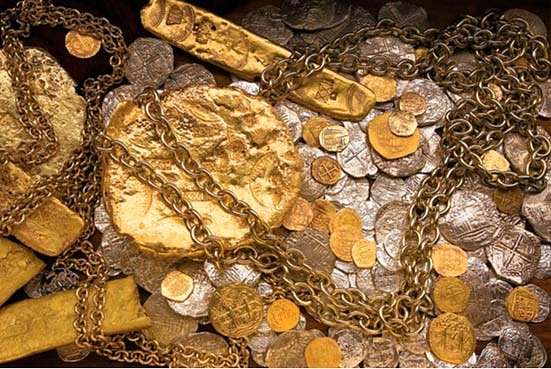
Work resumed the following year, 1627, and many treasures were recovered from the wreck of the galleon, but then a Dutch warship came upon them. The rescuers managed to escape to Cuba. Don Francisco returned to the site on New Year’s Day 1628 and once again succeeded in raising the sunken treasure of the galleon Santa Margarita. But the Dutch had already watched the site and Don Francisco would have been in trouble had not a Spanish warship come to the rescue of his crew. The war with Holland continued and soon a Dutch fleet of 30 ships under Admiral Hein appeared in the waters of the New World. The admiral captured the Spanish gold squadron that had left Havana. The enormous booty amounted to 3 million silver pesos, the equivalent of 3 billion 600 million dollars today.
In 1630, Don Francisco Melian was appointed governor of Venezuela. In 1643, already governor of Yucatan, he tried again to organize an expedition to recover the treasure of Atocha and Santa Margarita. But in the frenzy of preparing the flotilla, Don Francisco died. He never made it to the main treasure.
That’s how we live, make plans, save money, and suddenly, bam! And you don’t need anything anymore. Man plans and God gives.
In 1648 Spain, defeated in naval battles by Holland, France, and England, had lost its power on the European continent. Don Francisco Melian left a detailed audit and report on the work of recovering the treasures found. These documents ended up in the main archives in Seville, where they along with tons of other papers were quietly eaten up by paper termites.
In April 1970, a professor of archival science, Dr Eugene Lyon, was picking at a pile of paper. As he shooed the termites away from the remains of a page they had not finished chewing, he ran his eyes over the text. What he read made his glasses fogged up. And then it all began…
===== ===== ===
PART 2. “…I WILL GIVE YOU MY GOLD…”
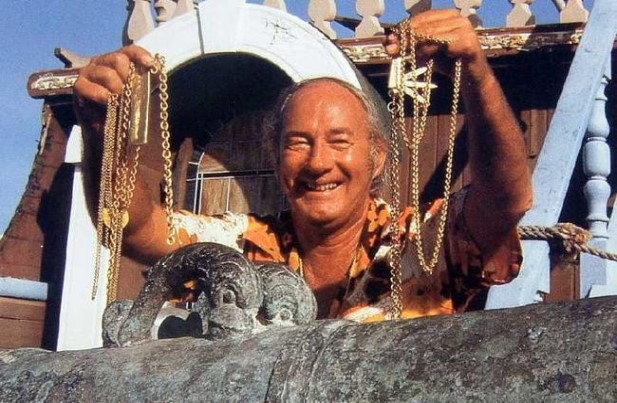
Mel Fisher was educated at the University of Alabama. In 1944 he was part of the American troops fighting Hitler’s Germany in Europe. In the fifties, American youth became interested in sailing and scuba diving. The Fisher family settled in California, where Mel opened a small business and bought a compressor to inflate the tanks that supplied scuba divers.
Eventually, Mel was invited to help design and test diving equipment. The company was based in Florida. The young engineer went to work for a company that made waterproof camera cases. Mel loved Florida for its beautiful and warm ocean.
He soon married red-haired beauty Dolores Horton and the newlyweds honeymooned in Florida, of course, where they spent their days on the ocean.
Mel tested his designs and Dolores helped him. They must have found something on the seabed because they both “fell ill” with a new passion. From then on, the couple spent every holiday in Florida, and one day Chance brought them together with a treasure hunter.
Kip Wagner was a construction worker. One day, while on holiday in Florida, he was walking along a sandy beach when he found an antique gold coin. This find changed his life.
Kip quit his job, moved to Florida, and settled into a trailer on the beach, where he spent his days with a simple metal detector. After hurricanes and severe storms, his “haul” was particularly rich.
Kip was surprised to find that all the gold and silver coins he found were dated 1714. As he pondered this, he concluded that the coastal waters of the ocean held the secret of a maritime tragedy. This led him to the Maritime Archives where, by digging through old documents, Kip found information about the sinking of the Spanish gold convoy in 1715 in the waters near where his car was on the beach.
Wagner was a practical American, so he set up a private salvage company and hired professional divers, many of whom had served in the military department. They quickly found several sunken ships, and the treasure they raised from the seabed was no longer counted by the piece, but by the bucket. For most of the year, however, the submariners were busy with their day jobs and only spent their vacations working for Wagner.
In 1963 Kip Wagner met the Fisher’s couple. They quickly found common ground and came to a mutual agreement. After returning to California and selling the business, Mel and Dolores moved their entire family to Florida. During the following summer season of 1964, the partners dredged up a million dollars worth of treasure!
Over several years, their divers found ten of the eleven sunken ships of the Gold Fleet in the coastal waters between Fort Pierce and Sebastian. Mel Fisher designed a blaster, a kind of curved tube that sent a jet of water from the ship’s propeller down to the bottom, eroding the sand. After testing the blaster at the site of one of the ships he found, Mel discovered that the seabed was littered with gold. This time he recovered one thousand and thirty-three gold coins from the seabed!
On hearing of such a find, military submariners resigned their contracts and were hired by Kip and Mel for permanent work. Some of them died, but that didn’t stop the rest. By the end of the sixties, the treasure hunters had recovered $20,000,000 (twenty million dollars) worth of treasure from the seabed! It was from this phenomenon that the legendary life of Mel Fisher began…
There are more gold, silver, and precious stones in the waters off the east coast of Florida than on the seabed of the entire western hemisphere. A particular attraction for adventurous divers is that the treasure lies at shallow depths, often less than ten meters. Following Fisher and Wagner’s discoveries, dozens of companies sprang up in Florida offering adventurers the chance to try their luck. By providing all the necessary equipment, the companies made money in the same way that amateurs once profited from selling picks and shovels to fortune-seekers during the California Gold Rush. The glitter of the yellow metal blinds people more than the sun. People talk big about God, but when you lure them with gold, God’s commandments and morals take a back seat. Rare is the saint who resists temptation. And certainly not a sinner who has sinned once. Here God can continue his experiments, but on naive sheep only. Because Satan has long since lured the man away.
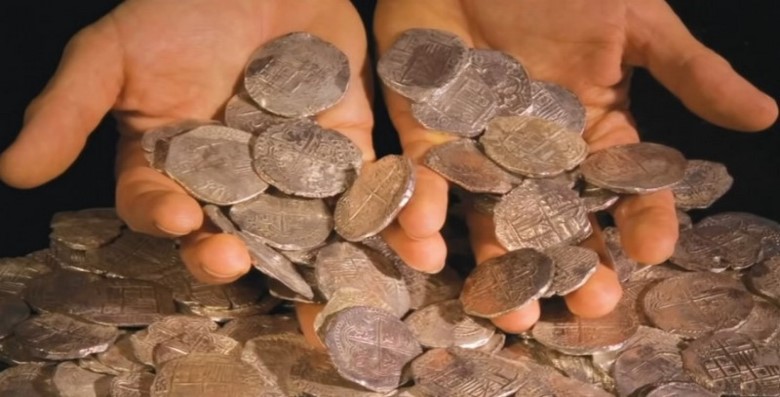
So the Florida authorities also wanted a piece of the El Dorado. The first thing they did was to extend the state’s territorial waters from 3 to 10 miles so that they would have legal title to the treasure found in those waters. They demanded a 25 percent share of the value of what they found while reserving for themselves the exclusive right to buy up the other 75 percent, at their price, of course. They also devised a scheme to rob the newcomer before he had even put on his diving gear.
From now on, anyone who wants to go treasure hunting in their waters must first buy a ‘search permit’, which gives a diver the right to search for a shipwreck. Then the bureaucrats came up with the idea of leasing sections of Florida’s coastal waters, and already at this stage another treasure hunter has to pay a lawyer to find out whether the place he is looking for has already been leased by someone before him. A special team of marine police patrols the coastal waters in their speedboats, catching those who have not paid the fees to the Treasury.
The next step is for the lucky finder to buy the right to develop the site. But not everyone gets the paper. Hundreds of finders have banded together to sue the bureaucrats, but they have all lost their cases, wasting money on lawyers. Once a treasure hunter, furious at a refusal, knocked out an official’s front teeth.
Having had a sad experience of dealing with bureaucrats, Mel Fisher decided to look for sunken treasure outside Florida’s territorial waters. Leaving his partner with the uncleaned ships of the 1715 convoy, he set off to find two galleons sunk by the hurricane of 1622, thirty miles south of Key West, the last island in the Florida chain.
The treasure of the Golden Convoy galleons had captured the imagination of generations of adventurers. Off the coast of Florida, at a depth of about ten meters, lay a billion dollars!
Mel had bought two powerful tugs and refitted them for his expedition, installing the blasters he had designed.
Rumors of the desperate adventurer’s expedition, which had become famous in the world of treasure hunting, leaked to the press and kept officials awake at night. Determined to thwart the stubborn Mel’s plans, the authorities took him to court, accusing him of tax evasion and other irregularities. One lawyer wasn’t enough for Fisher; he had a whole team working for him. Mel had won every case over the years and his savings had melted away. The research was slow, partly because he had to plow huge swathes of sea and crawl along the bottom to find any trace of the sand-covered galleons. In those days he was found by the same archivist, Eugene Lyon, whom I mentioned earlier. He showed Mel the archival documents he had found and offered his knowledge and help in his search. In time, this archivist became worth more to Mel than a ton of gold.
Mel and Dolores had four children who grew up with them. Children imitate their parents in everything, so here the whole family became a team of obsessives. He who seeks will always find, and one day, after years of searching, the eldest son, Dirk, and his team stumbled upon a treasure. They found gold and silver bars, jewelry, and weapons. Some of the silver bars weighed up to forty pounds each, and each one was stamped by the royal treasurers of Spain. By cross-referencing the stamp numbers with the cargo manifests, the archivist Lyon established that the treasure was part of the cargo of the galleon ‘Atocha’. It was the find of the year!
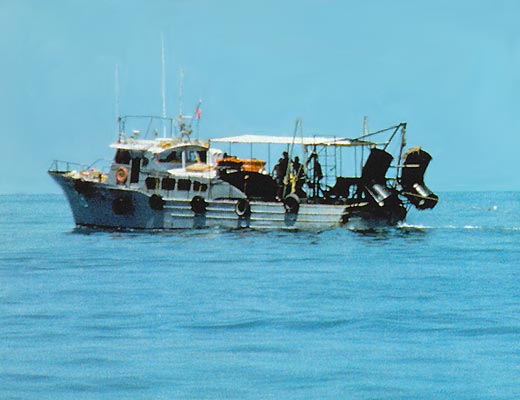
The National Geographic magazine began making a film about the Fisher expedition, and cameramen were constantly at the scene of the search. The filmmakers not only interfered with the work, but they also dramatized it with their presence. One day, the photographer’s eleven-year-old son jumped into the sea for a swim while work was in progress. The boy was pulled under the propellers and died.
Failures and accidents continued to plague the Fishers. They built a replica of the galleon and turned it into a museum, displaying the treasures and artifacts they had found. In August 1973 the floating museum sank off the dock for an undisclosed reason. Many of the exhibits were destroyed by the water. The following year, the US Securities and Exchange Commission froze the sale of the company’s securities, and a lengthy investigation deprived Mel of the financial resources to continue the search.
In the summer days of 1975, the eldest son, Dirk, whom his father had appointed captain of one of his two salvage vessels, found an astrolabe, a rare navigational instrument, which the archivist identified as belonging to the galleon ‘Atocha’. A week later, Dirk found 9 bronze cannons which, according to the marks on them, were part of the galleon’s armament. The boy was lucky, their search for the galleon had narrowed, and the searchers were close to the target.
Jealousy of Fisher’s success led the authorities to take new measures, one of which was to revoke all of Fisher’s licenses and strip him of his rights to the find. This was even though the galleon he had found was outside Florida’s territorial waters. In this paper war, Mel took to the US Supreme Court. His lawyers won the case.
One night Mel had a dream in which a strange voice said, “I’ll give you the gold. But in return, I’m going to take away the most precious thing you have…!
When Mel awoke, there was no one there. Alarmed, he went out on deck and stayed there for the rest of the night. Trying to get rid of the bad sign…
The day Dirk discovered the cannons on the seabed was the birthday of his young wife, Angel Fisher. The team decided to celebrate the anniversary at the search site. After delivering the guns to Key West, the two search vessels resupplied and put to sea that same day. Upon arrival at the site, located near the Marquesas Islands, the crews threw a party. Then the ‘North Wind’, and the ‘Virgalona’ anchored for the night at a decent distance from each other. Had they known what was in store for them, they would never have done it.
Early in the morning, the ‘North Wind’ was with a roll to starboard. A diver and his partner descended into the engine room and found that a water pipe had burst, water had flooded the batteries and shut down the pumps. Fuel from the left tank rushed into the starboard tank and within minutes the tug capsized. Six people were miraculously saved, but Kirk and his wife were trapped inside, and there was no way to reach them without scuba gear. And the second vessel stuck serenely on the horizon. Unable to see Kirk’s ship, they finally started the engine there. But by the time they got close, it was too late.
The ‘North Wind’ had sunk.
Dirk and Angel’s wedding had taken place only a few months before. Now they were buried in their wedding clothes, with the same priest officiating. Everyone said goodbye to them forever…..
The price they paid for the treasure was a terrible drama for the family. But they were determined to continue their search for the sunken galleons. One day, one-hundredth time rereading the yellowed pages, archivist Eugene Lyon did not stumble upon his own mistake. He found it in the Marquis de Cadereita’s report, and the mistake was a single word, misinterpreted, that cost the searchers years of wasted effort.
In that report the location of the sunken galleons was given as “…Este del ultima cayo”, and whether the first letter had been overlooked or gnawed off by termites, the written phrase was interpreted as “East of the island”. Now the archivist has discovered that with that lost letter the phrase was “Oeste del ultima cayo”. The galleons sank west of the island!
In 1980, Fisher’s divers reached the ‘Santa Margarita’. The galleon sank a few miles from the ‘Atocha’ at a very shallow depth of only 6-8 meters. Of course, over the centuries, waves and shifting sands had scattered treasure for miles around.
The first find was the diving bell of Spanish salvager Don Francisco Melian, who recovered some of the treasure from the sunken galleon ‘Santa Margarita’ in 1626. Also, thousands of silver coins and heavy gold bars were found. Once again, the archivist helped. Flipping through the pages of the manifests, he identified the brands on the bars and confirmed that they belonged to the cargo of the ‘Santa Margarita’ galleon.
There was also a fight for gold among Fisher’s diving team. One of the divers found a pile of gold bars and coins and decided to appropriate it. Another legal battle ensued, but Mel won. Every day brought new finds: gold and silver bars, jewelry, precious stones, coins, rings, and rings with emeralds, for which the rich paid millions of dollars at auctions.
The newspapers were full of rumors and dirty gossip. Blinded by gold, disregarding ethics and morality, officials from all departments pounced on the Fisher family like hungry hawks trying to get their hands on the wealth. Corrupt congressmen and their cronies mumbled vague phrases into television cameras. Mel Fisher’s family was hounded by the police, private investigators, and unscrupulous lawyers. The family lived surrounded by greed, in a world of passions that could kill any one of them at any time of the day or night. How did they manage to survive?
For Mel Fisher’s family, 1985 marked the seventeenth year of their search. In July of that year, their youngest son, Kane, found the Atocha’s main cargo.
Taffy, daughter: “…When we found the galleon’s main cargo, we were plunged into chaos and hysteria. Cameras were everywhere, we were being filmed for all the TV channels. Crowds of people stood outside our door for days and nights. We received thousands of congratulatory messages. Until that day, I didn’t know how many relatives we had…”.
For Mel, his wife Dolores, their three sons and daughter, seventeen years of searching and finding, the deaths of loved ones and friends, ended in triumph when their youngest son crossed the finish line. The two-and-a-half thousand pages of inventory included:
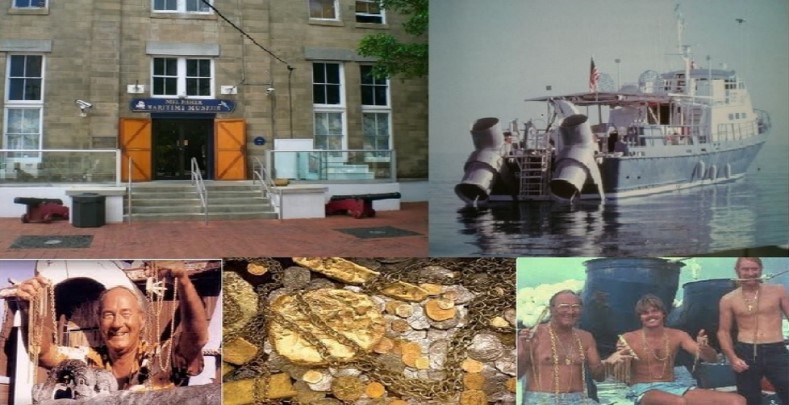
- 115 gold bars weighing 100 kilograms
- 27 gold chains.
- 2,615 emeralds, from half a carat to 77 carats
- 115,400 silver coins
- 76 gold doubloons
- 64 diamond brooches
- Numerous pieces of gold jewelry set with precious stones
- Rarest navigational instruments valued above gold
- a huge number of artifacts.
AFTERWORDS
I flew into Miami, rented a jeep, and drove to Key West. It was a non-stop drive of several hours across the bridges that connect the islands. Slightly swampy, but all very green, with bright sunshine and a sparkling blue sea, the islands. Key West is where the 21st century meets the 19th century. Many places are very interesting. But as I had to get back to Miami the same night, I put it all off until the next time and went where I wanted to go.
I went to the Mel Fisher Museum and it was everything I thought it would be. And even cooler. After a couple of hours, as I was leaving the building, I sat down on a step and lit my cigar. My head was full of impressions.
Not only had I seen with my own eyes the treasures, sunk almost four centuries ago and raised from the seabed.
I had touched the lives of dream-obsessed people, lives full of suffering and triumph. If you have a dream and are fanatical about it, it will come true!
Mel Fisher had proved it with his life.
Copyright Walter Maria №216012200150
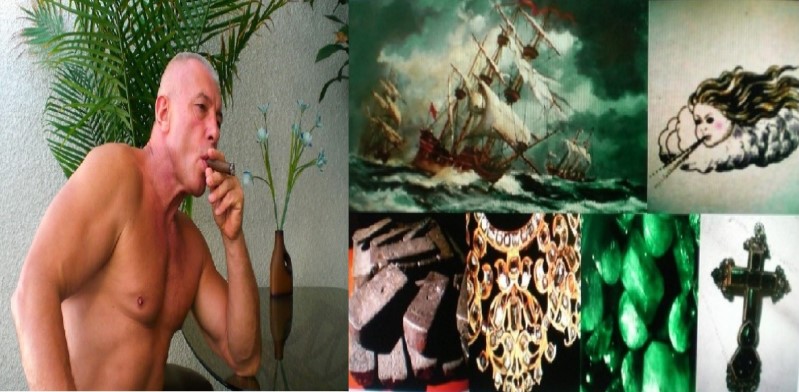
Real good info can be found on this website.
I like this weblog very much, Its a rattling nice office to read and receive info.